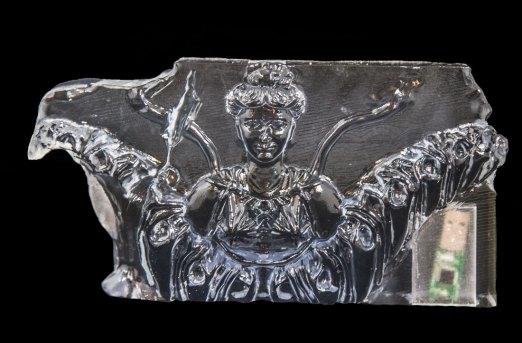Results 1 to 4 of 4
-
07-22-2016, 07:06 PM #1
Is it Okay to 3D Scan & 3D Print Reproductions of Fine & Ancient Art?
Many of you may be surprised the topic hasn’t come up yet—or more fervently—in terms of replicating famous artworks via 3D scanning and 3D printing. As Mark Sinclair recently brought up, the topic in regards to so many pieces of art being replicated in the context of historical preservation (and good deeds as well) could be considered a bit controversial in some circles, whether that be from the position of ethics in art or those who think areas like Mosul Museum that have been ransacked by ISIS should be left empty as a reminder of past horrors and devastation we need to stop from happening again. Currently, there is no law against replicating many of these items and of course museums are in charge of much of this activity. So, the question remains, as we ask ourselves whether it’s okay to replace everything now that we have technology allowing for nearly perfect facsimiles. Is that okay from an artistic standpoint, and is it a good idea in terms of history? Read more at 3DPrint.com: https://3dprint.com/143277/replicati...rk-3d-ethical/

-
07-23-2016, 03:16 PM #2Student

- Join Date
- Jul 2016
- Posts
- 1
Hi Brian,
Thanks for this post.
I was a volunteer in the project Rekrei for a year in which I worked to reproduce some artefacts and was in close contact with people from Mosul and other people involved in heritage. Now I created a group for modelisation of heritage including lost ones which is not restricted to ISIS linked event from far. So I pay quite attention to those law/ethnic related issues which as you said are "a new trend".
But we have to consider one thing, the problem is not new. Historical materials got destroyed in the past and it didn't convince people to stop filling a museum. The museum in Mosul was left empty due to the conflict in Iraq, the area is not safe since a long time before ISIS got involved. In fact they started to sent back the item to the museum just before ISIS arrived (bad luck...) the museum itself was renewed. If you analyse some pictures from the museum you can spot many sign of previous loot (attempt). The war with US also bring many complication for heritage conservation, you can see some site in Nimrud badely damaged and even bullet mark. I'm not saying it was the US army not even the Iraki army, it was just a very bad time and heritage site weren't the priority to look after.
The big "sensitivity" around the Mosul museum is more about "ISIS" as the N1 enemy rather than "how old it was" because you will find very few worry outside the community already involved in heritage.
And this might also explain how our models got so popular, it's not so much about the object or even the technique. Again it's more about ISIS. You will not much article in newspaper regarding 3D scan of heritage (stll here/damaged/destroyed) of non-ISIS related situation.
For example the reproduction of the Palmyra arch was very "politised" and many people in heritage were against the project. They do something quickly, not that accurate (at least questionably accurate) and well three day in London to be shipped away, it's a lot of money for a short event. It's clearly thanks to the impact that "fighting ISIS" has on the general public.
So even if there are law on that matter (because there is), it's hardly imaginable that someone will protest.
Also, despite project like Rekrei talking about "crowdsourcing", it's barely "crow sourced". Mosul museum was not a place full of tourist with iphone, it was a museum that barely recovered from the last conflict. Even one of the staff wasn't able to tell me the exact list of artefacts that were there before ISIS. The people who had pictures were Western visitors, like UNESCO mission or US army staff. We got pictures directly from them, they accepted, the people from the museum were glad, the only one who might had an issue would be ISIS and nobody care of that.
It becomes more problematic when we start to look at other heritage, but quite often it's more about ignoring the law than the absence of law. A little like downloading movies. There is law regarding the use of pictures which vary across countries and how you can "change them". But once the model made by photogrammetry, it's very hard to associate an existing picture. From what I saw now most of people like the resulting model and therefor never complain, it might change when the technology spread.
They have worst issue for now regarding 3D scan by drones or of real people.
Law aside, the 3D printing is really really far from the real object. It looks nice from far, but nothing even close to the original up close. It's not only about the shape, but the texture, how the light reflect on the surface etc.. If you carve stone, the result will depend on the tool and the fancy drilling arm robot is not the same that craftman. Not only the printing technology but the scanning is behind as well. Mostly regarding lost object, we are nothing near a correct printable version and many time the model has to be modify by hand (which might induce modification from the original). It's a nice showoff but at this stage it's nothing near a "reproduction". Like a 2D printing is very far from a painting replica.
The general public might got wrong because they might not see details and probably don't know well the object. But I would have doubt in a heritage professional if he consider a 3D print version of an artefact as "a replica". The Palmyra arch (if it reach Palmyra..) will stay outside as a symbol, it will not replace the original and if someone try, manye people will go against that.
The 3D printing is not welcomed in term of replacing what exist already, but more as documentation or communication. For example we can display the Mosul museum digitally across the world without someone to physicly go to Mosul. Or an archeologist can study an artefact that is located on the other side of the planet. But no one in the field will mistake a printed "replica" with an original. To be honest, the replacement issue is more often adress by technologist enthusiast rather than heritage professional.
The British Museum is using 3D print to show what was inside a mummie also.
The ethic of replica exist outside printing. So does the ethic of conservation (do we need or not to conserve an artwork, modern or old). In the 18th 19th there was systematic conservation treatment while nowdays it's a practice of "minim intervention". So there is fashion in conservation that lead to very complex conversation.
There is more complex case of printed artefact like Nefertiti Hack : http://nefertitihack.alloversky.com/
The author had a quite "ethical motivation" to 3D scan the bust inside the museum, without the agreement of the manager.
Ethic and law are perceive really differently. Like the Greek Marble in the British Museum. Many British see them as "part of British heritage" while Greek see them as stolen properties. International law is quite not there on that topic and have very few power. Both countries have different opinion and anyway, the marble were "taken" long ago before the current law enter in action.
We never replace drawing of old master or painting by print nor by a nice pictures.
So the real object will not be replace. Where they have been destroyed, other artefact can replace. The print can be used "to show" without being consider real object.
Sorry for the long reply. I did look at this topic for a year without real answer and I'm just giving an opinion here.
Have a nice day!
-
07-23-2016, 05:00 PM #3Staff Engineer

- Join Date
- Jan 2014
- Location
- Oakland, CA
- Posts
- 935
I don't see how a 3D scanned and printed replica can possibly "replace" an original work of art, any more than a 2D photograph can replace a painting. But if the original is lost, it's certainly better than nothing. Even if it's not, one gets a better idea of a sculptural piece from a 3D replica than from a photograph, or even a series of them.
In the current state of the law, it's not illegal to scan and reproduce any art that's not under copyright. While some proponents of "cultural patrimony" seek to restrict this right, so far they haven't passed any laws that are internationally recognized, as far as I know.
Andrew Werby
Juxtamorph.com
-
07-24-2016, 06:01 AM #4
I can't see the problem. You can't make an EXACT duplicate of an artifact that will stand up to professional scrutiny. No matter how good it looks and feels - it can't get round carbon dating.
But what it does do is make historical artifacts a lot more accessible to people who aren't historians and don't have easy access to museums.
Also you need to bear in mind that at the moment it takes some seriously expensive kit to make a half decent scan and print. Way way beyond the bank accounts and ability of the vast majority of people.
Another approach would be to say that if you COULD produce convincing copies and sell them to people as genuine. Then at leats you're NOT selling genuine, looted artifacts and anyone who believes they're buying an illegal artifact deserves to get a fake anyway :-)






 Reply With Quote
Reply With Quote




QIDI Slicer "Plater" is...
04-12-2024, 02:21 AM in QiDi 3D Printer Forum